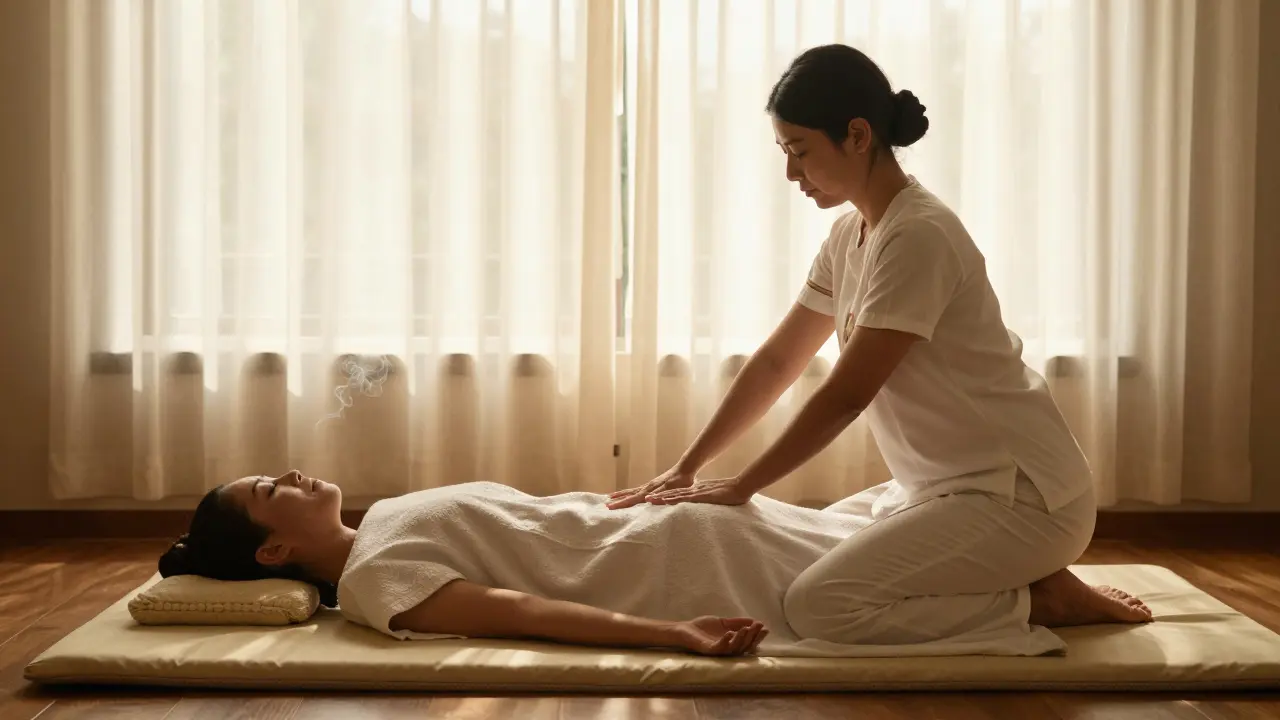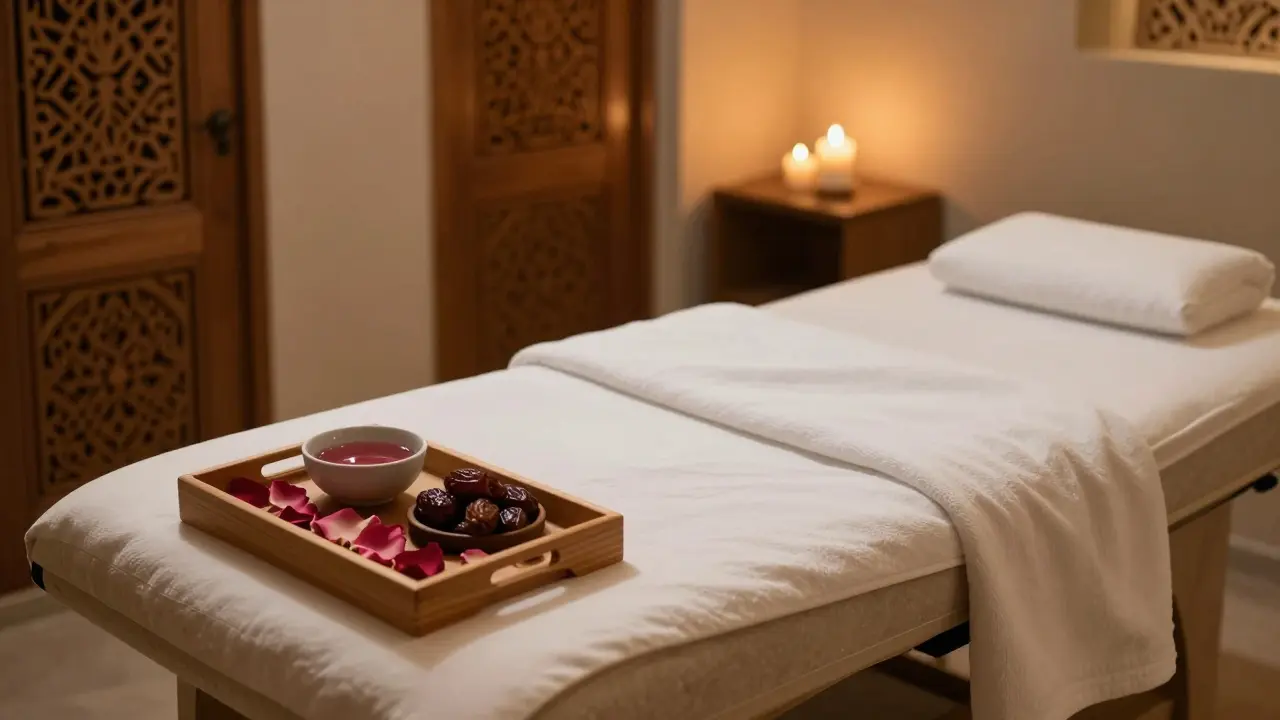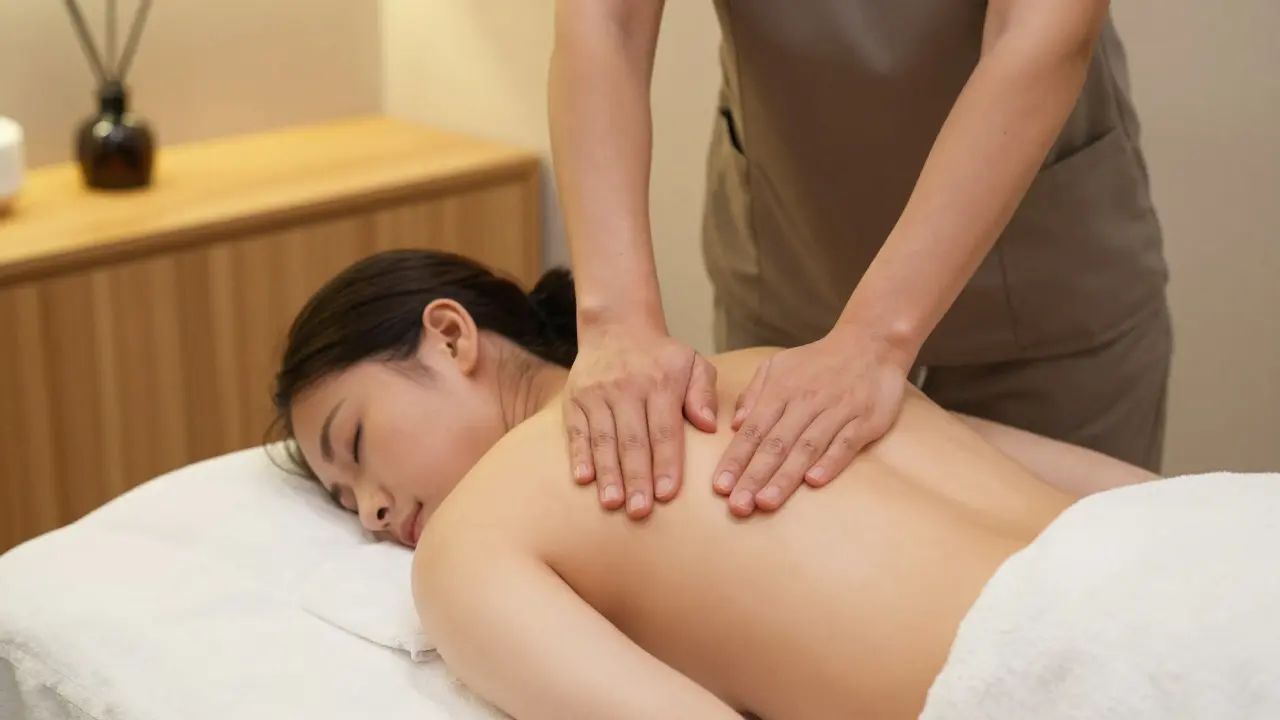Here’s something nobody tells you: people walk into their first full body massage feeling nervous, awkward, or even a bit worried about doing something wrong. Want to melt into the table and maximize every minute of bliss? Preparation isn’t just about showing up on time—it’s an art. Small details can make a huge difference between feeling self-conscious or floating out of the spa totally refreshed. Whether this is your first—or hundredth—massage, let me give you a human, no-nonsense guide to prepping like a pro.
Understanding What Happens During a Full Body Massage
Before you even think about what to wear or what to eat, it's good to know how a full body massage actually works. This isn’t just back rubbing with oils; it’s a choreographed routine from head to toe. Typical sessions last between 50 to 90 minutes. You’ll start either face-down or face-up, and the therapist will use a blend of kneading, long glides, and gentle pressure across most muscle groups. Expect attention to your neck, shoulders, back, arms, hands, legs, and feet. Some spas include your scalp and sometimes your face, while others skip the chest or stomach unless you ask.
There are lots of massage styles (Swedish, deep tissue, aromatherapy, hot stone). Most beginners choose Swedish, which focuses on gentler, relaxing motions rather than intense pressure. If it’s your first time, just say so—therapists love when clients are honest, and it helps them adjust the pace and pressure to your comfort. Scared it’ll be painful? It shouldn’t be. If something hurts, always speak up.
Another cool fact: According to the American Massage Therapy Association's last survey, 83% of people reported better overall mood after a session, while 72% said it lowered their stress enough to sleep better that night. All that from lying still for an hour—sounds like a good trade-off, right?
Physical and Mental Preparation: What to Do Before Your Appointment
One thing makes massage awkward faster than anything: eating a giant meal right before. Heavy food often leads to bloating or gurgling—which, let’s be honest, is not relaxing. Aim to eat light an hour or two before your session. Hydration is also a must. Muscles loosen better, and toxins release more easily if you’re not running on empty. Swapping out that third coffee for water pays off more than you think. Bring a water bottle for after your session, too; your body will thank you.
Shower before you go, if you can. Not only does this boost your confidence (no one wants to worry about gym sweat or deodorant streaks), but it also makes the experience better for your therapist. Avoid heavy perfumes, lotions, or makeup—massage oils can mix oddly with scented products and leave a sticky feeling after.
What should you wear? Go simple and comfy. Loose, easy-to-change clothes make things smoother, since you'll undress down to your underwear or what feels right for you. The therapist will leave the room while you get ready and always keeps you covered with sheets except for the area being worked on.
Some folks feel anxious about undressing. The truth: therapists are absolute pros. Modesty sheets, professional draping, and an attitude that’s all business means nobody’s judging your body or appearance, ever. The biggest thing you can do for your mind? Set your expectations. If you’re stressed, it’s okay—just focus on your breathing, or ask for calming music or lavender oil if your therapist offers it. You’re allowed to relax, even if you don’t feel chill at first.
Here’s a handy pre-massage checklist to keep things simple:
- Eat a light meal at least 60–90 minutes before your session.
- Hydrate—drink water before and after, skip alcohol or caffeinated energy drinks.
- Take a relaxing shower if possible.
- Skip heavy perfumes and moisturizers just before massage.
- Plan to wear comfy, loose-fitting clothes for easy changing.
- Arrive at least 10–15 minutes early to fill out any forms and unwind.

Common Questions: Etiquette, Aftercare, and How to Talk to Your Massage Therapist
The topic of etiquette comes up a lot, especially for first-timers. How much should you tip? (In the US, 15–20% is standard.) Should you shave? (That’s up to you; body hair doesn’t bother professionals at all.) Is it okay to chat? Sure, some people love to talk—but it’s also completely fine to enjoy total silence or listen to calm music. Tell your therapist your preference at the start. Most importantly: always speak up if something’s uncomfortable. This is your time.
Wondering what happens if you fall asleep? Don’t worry! Plenty of people do. Therapists consider it a compliment—they want you to relax so deeply you literally nod off. Even snoring is more common than you’d think. Drooling? Also totally normal.
Concerned about modesty or pain points? Therapists drape you carefully, and you never have to undress more than you want. If there’s a sore spot, or an injury, just mention it before you start. Good therapists ask about pain, allergies, and preferences. If you’re ticklish anywhere or have sensitive skin, let them know. Pregnant? Massage can be amazing—but prenatal specialists should handle it and will adjust you for comfort and safety.
After your session, move slowly. Your muscles may feel a bit loose, almost jelly-like. Drink a glass or two of water and avoid jumping right back into heavy exercise. If you notice soreness or bruising later, that’s usually from deep tissue work and eases in a day or two. Stretching gently can help, and if you’re extra sore, a warm bath with Epsom salts is a classic trick. Here’s a quick table showing what to do—and not do—after a massage:
| Do | Don't |
|---|---|
| Drink water or herbal tea | Consume alcohol right after |
| Take a warm shower or bath | Jump into strenuous workouts |
| Allow yourself to relax/rest | Book an important meeting immediately |
| Listen to your body for soreness | Ignore serious pain or injury signs |
If you’re wondering about how often you should get massages, the answer depends on your needs. For stress relief or relaxing muscles, once or twice a month is typical. Athletes or people with chronic pain sometimes go weekly. There’s no rules—just listen to your body (and your wallet).
Insider Pro Tips to Enhance Your Full Body Massage Experience
Ready to elevate your massage to superstar status? Small upgrades or tiny tweaks before your appointment can ramp up the benefits big time. If the spa offers enhancements, splurge on something you’re curious about—hot stones are great for stubborn knots, essential oils like lavender or eucalyptus can really deepen relaxation, and some therapists even offer scalp or foot scrubs.
The full body massage experience starts before you get on the table, honestly. If your day is hectic, try calming down beforehand with a short walk or a few deep breaths outside. Put your phone away when you enter the spa, or better yet, leave it on silent in your bag. Give your brain permission to unplug.
Some guests bring their own playlists or sleep masks. This isn’t weird—if hearing your favorite chill-out tunes or blocking stray light makes you drop tension quicker, ask your therapist if it’s allowed. If you’re sensitive to noise, foam earplugs can be a lifesaver in busy spas. And if you’re particular about products (for example, if you have allergies or eczema), you can ask about hypoallergenic oils or bring your own. Therapists want you to have the best possible session—they appreciate when you share what works for you.
If you get cold easily, don’t be shy about asking for extra sheets or a heated blanket. Many spas keep rooms slightly cool for hygiene reasons, but your comfort comes first. Worried about oily residue afterward? Ask for a warm towel to wipe down, or bring easy facial wipes for a quick refresh.
After your massage, try to keep a slow pace for the rest of the day. Cramming in grocery shopping or stressful errands right after always ruins the calm. Try to walk a little slower, savor the feeling in your muscles, and—if you can—get extra sleep that night. Your body does most of its repair work when you rest, and massages only speed things up. Pro athletes aren’t the only ones who need recovery.
Massage therapy is still gaining fans. According to 2023’s Spa Industry Report, 37% of people said the main reason they booked a session was “pure stress relief,” while 26% wanted “muscle recovery” after working out, and a surprising 12% went just for better sleep. What does this tell you? People see results, fast. So why not get the most from every minute by prepping with intention?
It’s wild how easy it is to get lost in the details or overthink what’s expected of you. The honest secret: everyone, even regulars, has felt uncertain in a new spa. The best tip of all? Give yourself permission to embrace the weirdness and focus instead on one thing you can control—showing up, ready for good things, and letting go for just a little while.

FAQ
- Should I shave before a full body massage? – Shaving is not required, and therapists truly don’t care about body hair. Groom if you want to, but never feel pressured.
- What should I wear to my appointment? – Wear loose, comfy clothes. You’ll undress to your comfort level and remain covered during the session except for the area being worked on.
- Can I request a specific type of oil or scent? – Yes! If you have allergies, skin sensitivities, or preferences, let your therapist know ahead of time. Many spas offer options.
- Is it okay to talk or ask questions during a massage? – Absolutely. Communication helps customize your experience and ensures you’re totally comfortable.
- How long do the effects of a massage last? – Most people feel relaxed and refreshed for days. For long-term benefits, regular sessions are best.







